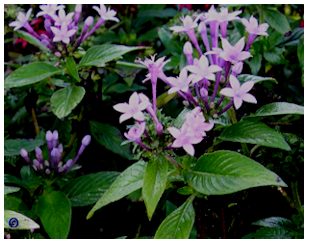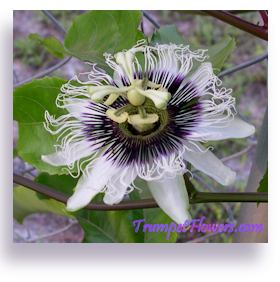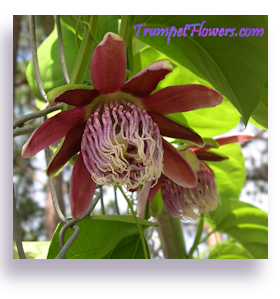Gardening Tips
And Tricks
 Gardening styles depend a lot upon individual taste, and how much space one has available. Whether you are trying to do a veggie garden, or have a hankering for a lovely perrenial path, raised beds provide space∼efficient gardening that will allow you to plant more veggies in a smaller space, or pack more perrenials into view.
Gardening styles depend a lot upon individual taste, and how much space one has available. Whether you are trying to do a veggie garden, or have a hankering for a lovely perrenial path, raised beds provide space∼efficient gardening that will allow you to plant more veggies in a smaller space, or pack more perrenials into view.
 If you want to grow some plants that are one zone higher than you, try planning that garden right beyond the house, and in a position that you know is located where the house will block the northern winds. If you have a few trees beyond that space, it is even better. Mulch the garden plants well for winter keeping. Also be sure that the space for the garden is not located in a microclimate that is lower zoned. For added protection, you could add a 3 or 4 foot tall stone or concrete ornametal wall surrounding the garden. This will help retain heat and give the garden even more protection from cold winters.
If you want to grow some plants that are one zone higher than you, try planning that garden right beyond the house, and in a position that you know is located where the house will block the northern winds. If you have a few trees beyond that space, it is even better. Mulch the garden plants well for winter keeping. Also be sure that the space for the garden is not located in a microclimate that is lower zoned. For added protection, you could add a 3 or 4 foot tall stone or concrete ornametal wall surrounding the garden. This will help retain heat and give the garden even more protection from cold winters.
 If you've grown out some plants to be transplanted out to the garden and they are in seed trays or flats, use a honed knife and cut sharply between each plants to create blocks. Water them well and leave in the flat for another few days. This will help reduce transplant shock, and help the new plants to adapt better to their new outdoor homes.
If you've grown out some plants to be transplanted out to the garden and they are in seed trays or flats, use a honed knife and cut sharply between each plants to create blocks. Water them well and leave in the flat for another few days. This will help reduce transplant shock, and help the new plants to adapt better to their new outdoor homes.
 No Show Seeds? There are several things that could be going wrong. First, the seed could be too old and past it's viability age. Make sure you know the correct germination time before making this judgement. Another thing that might have happened is that you planted the seeds too deeply. Many people make this mistake, I find it to be quite common amongst emails I receive from followers of my blogs. Also, the seeds could have dried out between the planting time and your watering schedule thereon. Make sure you firm the soil around the seeds well, and keep them moist throughout the time until germination occurs. The seed could have also rotted due to overwatering or fungus rot, or both. If you see fungus knats when you approach the pots, this may be the cuplrit. Make sure the soil is not soggy, but kept evenly moist. The soil may have been too cold to allow for germination to take place. In this case, warm the soil up and wait a bit longer to see if the seeds do germinate at a later date. Lastly, underground pests could be to blame.
No Show Seeds? There are several things that could be going wrong. First, the seed could be too old and past it's viability age. Make sure you know the correct germination time before making this judgement. Another thing that might have happened is that you planted the seeds too deeply. Many people make this mistake, I find it to be quite common amongst emails I receive from followers of my blogs. Also, the seeds could have dried out between the planting time and your watering schedule thereon. Make sure you firm the soil around the seeds well, and keep them moist throughout the time until germination occurs. The seed could have also rotted due to overwatering or fungus rot, or both. If you see fungus knats when you approach the pots, this may be the cuplrit. Make sure the soil is not soggy, but kept evenly moist. The soil may have been too cold to allow for germination to take place. In this case, warm the soil up and wait a bit longer to see if the seeds do germinate at a later date. Lastly, underground pests could be to blame.
 Reduce watering needs in your garden with a few tricks. You can begin by working organic matter (compost) into the first few inches of the soil. Space your perrenials so they are closer by a few inches or so than the directions call for. The tight spacing will help the plants knit together, and their leaves will shade the soil better, and hold water at a better rate. Always mulch your new plantings. Make sure the beds you are planting in are level. This will keep the water from running off and leaving some of your charges high and dry. Use a soaker hose whenever possible. This allows for consistent watering. Do not use more water than you need to. Use a timer to make sure everyone gets watered evenly. Water after dark. If possible, water your plants around 2 AM. This allows the water used to completely soak in and not evaporate before the plant can adsorb it through their root systems.
Reduce watering needs in your garden with a few tricks. You can begin by working organic matter (compost) into the first few inches of the soil. Space your perrenials so they are closer by a few inches or so than the directions call for. The tight spacing will help the plants knit together, and their leaves will shade the soil better, and hold water at a better rate. Always mulch your new plantings. Make sure the beds you are planting in are level. This will keep the water from running off and leaving some of your charges high and dry. Use a soaker hose whenever possible. This allows for consistent watering. Do not use more water than you need to. Use a timer to make sure everyone gets watered evenly. Water after dark. If possible, water your plants around 2 AM. This allows the water used to completely soak in and not evaporate before the plant can adsorb it through their root systems.
 How to permanently kill a stump. If you have a tree or woody shrub that continues to resprout after being cut, forget the expensive stump killing solutions. Instead, go to an Art Supply Store, and buy yourself some real enamel paint, in tube form. Sometimes it can be found at Home Depot and Lowes, but never in a paint can anymore, only spray cans. Paint the entire cut surface of the stump with the enamel paint. That's it. The stump will no longer grow, and begin to deterioate underneath the soil.
How to permanently kill a stump. If you have a tree or woody shrub that continues to resprout after being cut, forget the expensive stump killing solutions. Instead, go to an Art Supply Store, and buy yourself some real enamel paint, in tube form. Sometimes it can be found at Home Depot and Lowes, but never in a paint can anymore, only spray cans. Paint the entire cut surface of the stump with the enamel paint. That's it. The stump will no longer grow, and begin to deterioate underneath the soil.
If you have sideshoots appear, just cut them off and give them the same application of enamel.
 Foliar feed, Foliar feed, Foliar feed! It has been noted by scientists that up to 70 percent of a plants nutritional needs are met by leaf intake, not root uptake. For the best growth and the most flowers, be sure to learn more about foliar feeding your plants. I do it once or twice a week. Here is a page on more technicques and products I use Foliar Feeding
Foliar feed, Foliar feed, Foliar feed! It has been noted by scientists that up to 70 percent of a plants nutritional needs are met by leaf intake, not root uptake. For the best growth and the most flowers, be sure to learn more about foliar feeding your plants. I do it once or twice a week. Here is a page on more technicques and products I use Foliar Feeding
 Don't get upset about a few so called weeds. There are many 'weeds' that are actually quite beneficial to balancing out the soil (legume family comes to mind) and still others that feed tiny beneficial insects and still others are used by butterfly larvae as food sources. Bees love tiny flowers that some of us just walk right over, without nary a glance. Leaving a few of the less pernicuous weeds where they are, will not do much to affect your prized garden beauties, and they will aide in holding in water and soil nutrients, especially in soils lacking in the ability to do this on their own, such as sandy soils. Remember too, that what some call weeds, are actually native prarie grasses that spent millions of years adapting to North America, and rightly belong in the niche. So, get to know your weeds, and find out more about which ones can help in your gardening.
Don't get upset about a few so called weeds. There are many 'weeds' that are actually quite beneficial to balancing out the soil (legume family comes to mind) and still others that feed tiny beneficial insects and still others are used by butterfly larvae as food sources. Bees love tiny flowers that some of us just walk right over, without nary a glance. Leaving a few of the less pernicuous weeds where they are, will not do much to affect your prized garden beauties, and they will aide in holding in water and soil nutrients, especially in soils lacking in the ability to do this on their own, such as sandy soils. Remember too, that what some call weeds, are actually native prarie grasses that spent millions of years adapting to North America, and rightly belong in the niche. So, get to know your weeds, and find out more about which ones can help in your gardening.
Just as an afternote, here in South FloridaPusley, also known under the common name Florida Snow, is a wonderful, low growing 'weed' that bees and butterflies love. You do not need to mow it, and when it takes over an area, it is beautiful to gaze upon the thousands of tiny white to pinkish white miniature blooms, abuzz with beneficial insects.
 Save money reusing plastic plant label tags! Sometimes we end up with a bunch of leftover plastic plant label tags. Instead of throwing them away, recycle them! It's simple. Take a clean, widemouthed mayonnaise jar or similar jar, and fill about 2/3 with rubbing alcohol. Place a clean plant label tag(s) into this alcohol, replace lid, and let it soak a few days to a few weeks. As each day goes by, the alcohol will remove the indelible ink writing from the tag, and you can reuse it to label up another plant.
Save money reusing plastic plant label tags! Sometimes we end up with a bunch of leftover plastic plant label tags. Instead of throwing them away, recycle them! It's simple. Take a clean, widemouthed mayonnaise jar or similar jar, and fill about 2/3 with rubbing alcohol. Place a clean plant label tag(s) into this alcohol, replace lid, and let it soak a few days to a few weeks. As each day goes by, the alcohol will remove the indelible ink writing from the tag, and you can reuse it to label up another plant.
Some folks do this with a bleach and water solution. I have tried that too. I have found the downside to this solution was that the bleach weakened the tags, and they were more brittle and broke down sooner. Since I already keep a jar of alcohol around for hybridizing useage, it can double for plant tag cleaning too.
Tags: gardening tips and tricks, gardening tips and tricks, keep the weeds, foliar feeding, reduce watering needs, prepare your transplants, higher zone garden, raised bed garden, florida snow, pusley,




